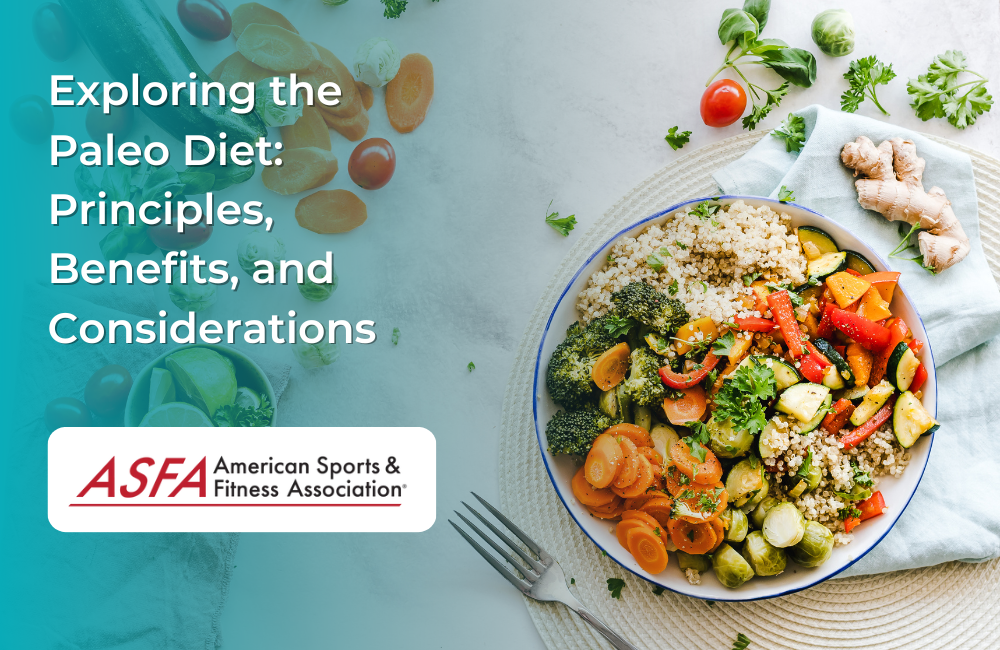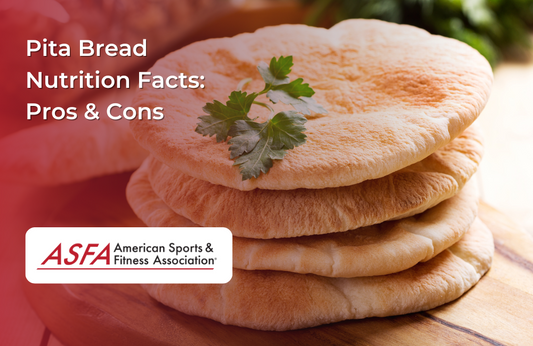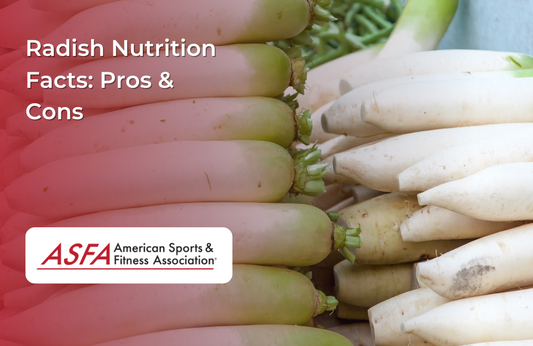The Paleo diet, often referred to as the Paleolithic or Caveman diet, is a nutritional approach modeled after the hunter gatherer diet of our ancestors during the Paleolithic era, which spanned over 2.5 million years ago. Advocates of the Paleo diet suggest that by returning to the dietary patterns of early humans, we can align our nutrition with our genetics, promoting better health and well-being. While modern agriculture has introduced grains, processed foods, and dairy, proponents believe these additions are mismatched with our genetic makeup, contributing to modern-day health problems.
In this detailed post, we’ll explore the principles, potential benefits, and key considerations of the Paleo diet, offering insights into how it might fit into your lifestyle and nutritional goals.
Definition and Purpose
The Paleo diet, also known as the Stone Age diet or caveman diet, is an eating plan that focuses on whole, unprocessed foods that were likely consumed by early humans during the Paleolithic era. The primary purpose of the Paleo diet is to promote weight loss, improve overall health, and reduce the risk of chronic diseases by eliminating highly processed foods, added sugars, and unhealthy fats. By mimicking the dietary habits of our ancestors, the Paleo diet aims to align our nutrition with our genetic makeup, potentially leading to better health outcomes and a more balanced lifestyle.
Principles of What is Paleo Diet
-
Emphasis on Whole Foods: At its core, the diet paleo promotes the consumption of whole, nutrient-dense foods that were available to our ancestors in the form of hunting, gathering, and foraging. This diet prioritizes foods that humans have consumed for millions of years, including:
-
Lean meats (preferably grass-fed or pasture-raised)
-
Fish and seafood (especially wild-caught)
-
Eggs
-
Fresh fruits and vegetables
-
Nuts and seeds
The idea is that these foods are closest to what early humans would have eaten and provide the essential nutrients necessary for optimal health. This focus on whole foods helps to reduce the intake of additives, preservatives, and unhealthy fats commonly found in processed products, while supplying essential vitamins, minerals, and antioxidants that promote well-being. Paleo eating can include a typical meal plan with breakfast of scrambled eggs and vegetables, lunch of grilled chicken salad, and dinner of baked salmon with roasted vegetables.
-
Exclusion of Processed Foods: One of the most significant principles of the Paleo diet is the elimination of processed foods. Foods like refined grains, sugars, vegetable oils, artificial additives, and preservatives are strictly avoided. These foods are seen as modern inventions that humans were not evolutionarily designed to consume, and many experts believe that these processed products contribute to metabolic diseases like obesity, type 2 diabetes, and heart disease.
Processed foods tend to be high in empty calories and unhealthy fats, leading to poor dietary quality and potential health complications. By cutting them out, the Paleo diet helps people return to simpler, more nutrient-dense eating patterns.
-
Removal of Grains and Legumes: One of the more controversial aspects of the Paleo diet is the exclusion of grains and legumes, such as wheat, rice, corn, beans, lentils, and peanuts. Proponents argue that grains and legumes contain antinutrients, such as lectins and phytates, which can interfere with nutrient absorption and contribute to digestive issues and inflammation in some individuals.
While grains and legumes are rich sources of fiber and other nutrients, advocates of the Paleo diet believe that the potential risks outweigh the benefits for many people. Instead, they suggest obtaining fiber and carbohydrates from vegetables, fruits, and nuts, which are more aligned with the human digestive system’s capabilities.
-
Elimination of Dairy Products Another food group excluded from the Paleo diet is dairy. The rationale is that early humans did not domesticate animals for milk production until the advent of agriculture, and many adults today have some degree of lactose intolerance, making it difficult to digest dairy products. The Paleo diet argues that the exclusion of milk, cheese, and yogurt may improve digestive health, particularly for individuals who experience lactose sensitivity.
While dairy can be a valuable source of calcium and other nutrients, those following the Paleo diet are encouraged to meet their nutritional needs through non-dairy sources, such as leafy greens, seeds, and bone broth.
Foods to Eat
The Paleo diet emphasizes whole, unprocessed foods that are nutrient-dense and beneficial for overall health. Here are some key components of the Paleo diet food list:
-
Lean meats: Grass-fed beef, bison, chicken, fish, and wild game are excellent sources of protein and essential nutrients.
-
Fruits: Berries, citrus fruits, apples, bananas, and other fruits that are low in sugar and high in fiber provide vitamins, minerals, and antioxidants.
-
Vegetables: Leafy greens, broccoli, bell peppers, carrots, and other vegetables that are low in sugar and high in fiber offer a wide range of nutrients and support digestive health.
-
Nuts and seeds: Almonds, walnuts, chia seeds, flaxseeds, and other nuts and seeds that are low in omega-6 fatty acids provide healthy fats and protein.
-
Healthy fats: Olive oil, coconut oil, avocado oil, and other healthy fats that are low in omega-6 fatty acids support heart health and overall well-being.
-
Whole grains: Although not a traditional Paleo food, some modern Paleo diets include whole grains like brown rice, quinoa, and whole wheat to provide additional fiber and nutrients.
Foods to Avoid
The Paleo diet eliminates or restricts certain foods that are considered detrimental to health. Here are the main categories of foods to avoid:
-
Processed foods: Packaged snacks, sugary drinks, and other foods that are high in added sugars, salt, and unhealthy fats are excluded to reduce the intake of empty calories and harmful additives.
-
Grains: Wheat, rice, quinoa, and other grains that are high in carbohydrates and low in fiber are avoided to prevent blood sugar spikes and digestive issues.
-
Dairy products: Milk, cheese, yogurt, and other dairy products that are high in sugar and low in fiber are excluded to improve digestive health, especially for those with lactose intolerance.
-
Legumes: Beans, lentils, peanuts, and other legumes that are high in carbohydrates and low in fiber are restricted due to their potential to cause digestive discomfort and inflammation.
-
Added sugars: Table sugar, high-fructose corn syrup, and other added sugars that are high in calories and low in nutrients are eliminated to support better blood sugar control and weight management.
-
Unhealthy fats: Vegetable oils, partially hydrogenated oils, and other unhealthy fats that are high in omega-6 fatty acids are avoided to reduce inflammation and support heart health.
Paleo Diet Variations
There are several variations of the Paleo diet, each adapting the core principles to suit different needs and preferences:
-
Strict Paleo diet: This version eliminates all grains, dairy products, legumes, and processed foods, adhering closely to the original principles of the Paleo diet.
-
Modern Paleo diet: This variation allows for some whole grains, dairy products, and legumes while still emphasizing whole, unprocessed foods. It offers more flexibility and can be easier to maintain long-term.
-
Mediterranean Paleo diet: Combining the Paleo diet with the Mediterranean diet, this approach emphasizes whole grains, fruits, vegetables, and healthy fats, providing a balanced and heart-healthy eating plan.
-
Paleo diet for athletes: Tailored for active individuals, this version emphasizes lean meats, fish, and eggs, and allows for some whole grains and dairy products to support athletic performance and recovery.
Potential Health Benefits of the Paleo Diet
-
Nutrient-Dense Foods: By emphasizing whole, unprocessed foods, the Paleo diet is naturally rich in essential nutrients. Nutrient-dense options like lean meats, fish, vegetables, fruits, nuts, and seeds provide vitamins, minerals, and antioxidants, which help support overall health. For example, wild-caught fish supplies heart-healthy omega-3 fatty acids, while leafy greens and nuts are rich in calcium, magnesium, and fiber.
This nutrient density is believed to contribute to better immune function, enhanced energy levels, and improved skin health, as well as reduced risk of chronic diseases.
-
Reduced Processed Food Intake: By eliminating processed foods, the Paleo diet reduces the intake of refined sugars, unhealthy fats, and artificial additives, which can contribute to inflammation, obesity, and metabolic issues. Processed foods are often calorie-dense but nutrient-poor, leading to overconsumption and weight gain. By focusing on whole foods, the Paleo diet supports better portion control and a more balanced intake of nutrients.
-
Increased Protein Intake: The Paleo diet’s emphasis on lean meats, fish, and eggs results in a higher protein intake compared to many other diets. Protein is essential for muscle growth, repair, and satiety. Increased protein consumption can also help with weight management and to lose weight by promoting feelings of fullness and preventing overeating. Minimizing sugary fruits and starchy vegetables can further support weight loss goals.
Higher protein intake supports muscle recovery, making the Paleo diet appealing to athletes and active individuals seeking to optimize their body composition and performance. Additionally, protein is critical for maintaining lean muscle mass, which is important for metabolic health and longevity.
-
Improved Blood Sugar Control: By eliminating refined carbohydrates and sugars, the Paleo diet helps to regulate blood sugar levels. This can be especially beneficial for individuals with insulin resistance or type 2 diabetes, as it may reduce the risk of blood sugar spikes and improve overall glucose management.
Focusing on low-glycemic foods like vegetables, lean meats, and nuts helps to stabilize energy levels and prevent the crashes often associated with high-sugar diets.
Considerations of Processed Foods in the Paleo Diet
-
Nutrient Balance and Deficiencies: While the Paleo diet is nutrient-dense, the exclusion of entire food groups like grains, legumes, and dairy can lead to potential nutrient deficiencies if not carefully managed. For example, calcium, fiber, and certain B vitamins found in grains and dairy may be lacking in a strict Paleo diet. In contrast, a balanced, healthy diet that includes a variety of foods like fruits, vegetables, and legumes can provide significant health benefits and support weight maintenance. To ensure balance, individuals following the Paleo diet should focus on alternative sources of these nutrients, such as leafy greens for calcium and nuts and seeds for fiber.
Those considering the Paleo diet should pay attention to their overall nutrient intake and may benefit from consulting with a dietitian to prevent deficiencies.
2. Individual Variation: No one dietary approach works for everyone. The Paleo diet may be beneficial for some individuals, particularly those with food sensitivities or digestive issues, but it may not be suitable for everyone. Personal factors such as genetics, activity level, and existing health conditions can affect how well a person responds to the diet.
Some people thrive on the high-protein, low-carb nature of the Paleo diet, while others may find it too restrictive or lacking in certain nutrients. It’s crucial to listen to your body and consider whether the Paleo diet aligns with your lifestyle and long-term health goals.
3. Sustainability: Adhering to the Paleo diet requires careful meal planning and preparation, particularly for individuals with busy schedules or limited access to organic, pasture-raised, or wild-caught foods. Sourcing high-quality, unprocessed foods can be more expensive and time-consuming compared to a traditional diet.
The diet’s exclusion of common staples like grains and legumes may also pose challenges when eating out or in social settings, as these foods are often integral to many meals.
4. Long-Term Adherence: The restrictive nature of the Paleo diet can make it difficult for some individuals to stick to long term. Eliminating grains, legumes, and dairy may be challenging for those who enjoy these foods or rely on them for convenience. Additionally, the social and cultural aspects of food are important for many people, and long-term adherence to the Paleo diet may feel isolating or overly restrictive in some situations.
It’s important to find a dietary approach that is both effective and enjoyable. For some, a modified version of the Paleo diet that allows for occasional indulgences or reintroduces certain excluded foods may be more sustainable.
Making the Paleo Diet Fit Your Lifestyle
To make the Paleo diet fit your lifestyle, consider the following tips:
-
Start with small changes: Begin by eliminating one or two processed foods or added sugars from your diet each week. Gradual changes can make the transition easier and more sustainable.
-
Plan ahead: Create a meal plan or grocery list to ensure you have healthy, whole foods on hand. Planning ahead can help you avoid the temptation of processed foods.
-
Cook at home: Cooking at home allows you to control the ingredients and portion sizes of your meals. Experiment with Paleo diet recipes to keep your meals interesting and enjoyable.
-
Find Paleo-friendly restaurants: Many restaurants now offer Paleo-friendly options, or you can ask for modifications to make a dish Paleo-friendly. Researching menus ahead of time can help you make better choices when dining out.
-
Be mindful of portion sizes: Even healthy foods can be unhealthy if consumed in excess. Pay attention to portion sizes to maintain a balanced diet and support weight loss goals.
-
Stay hydrated: Drink plenty of water throughout the day to stay hydrated and support overall health. Proper hydration is essential for digestion, energy levels, and overall well-being.
By following these tips, you can successfully integrate the Paleo diet into your lifestyle, enjoying its health benefits while maintaining a balanced and enjoyable approach to eating.
Conclusion and Paleo Diet Recipes
The Paleo diet offers a whole-food-based approach to nutrition that aligns with the eating habits of our ancient ancestors. Its emphasis on nutrient-dense, unprocessed foods can provide many health benefits, such as improved blood sugar control, better nutrient intake, and reduced consumption of processed foods. However, it also comes with considerations, including potential nutrient deficiencies, sustainability challenges, and individual variation in response to the diet. For meal planning inspiration, consider looking at a sample paleo diet menu.
Before starting the Paleo diet, it’s important to evaluate your personal health goals, preferences, and needs. Consulting with a healthcare professional or registered dietitian can provide valuable guidance and ensure that your dietary approach is balanced and tailored to your individual requirements.
For those looking to integrate nutrition knowledge into their fitness career, ASFA’s Advanced Sports Nutrition Certification offers a comprehensive understanding of dietary principles, including the Paleo diet, and how to apply them effectively for clients. Click the link below to explore ASFA’s certifications and take your expertise to the next level!





